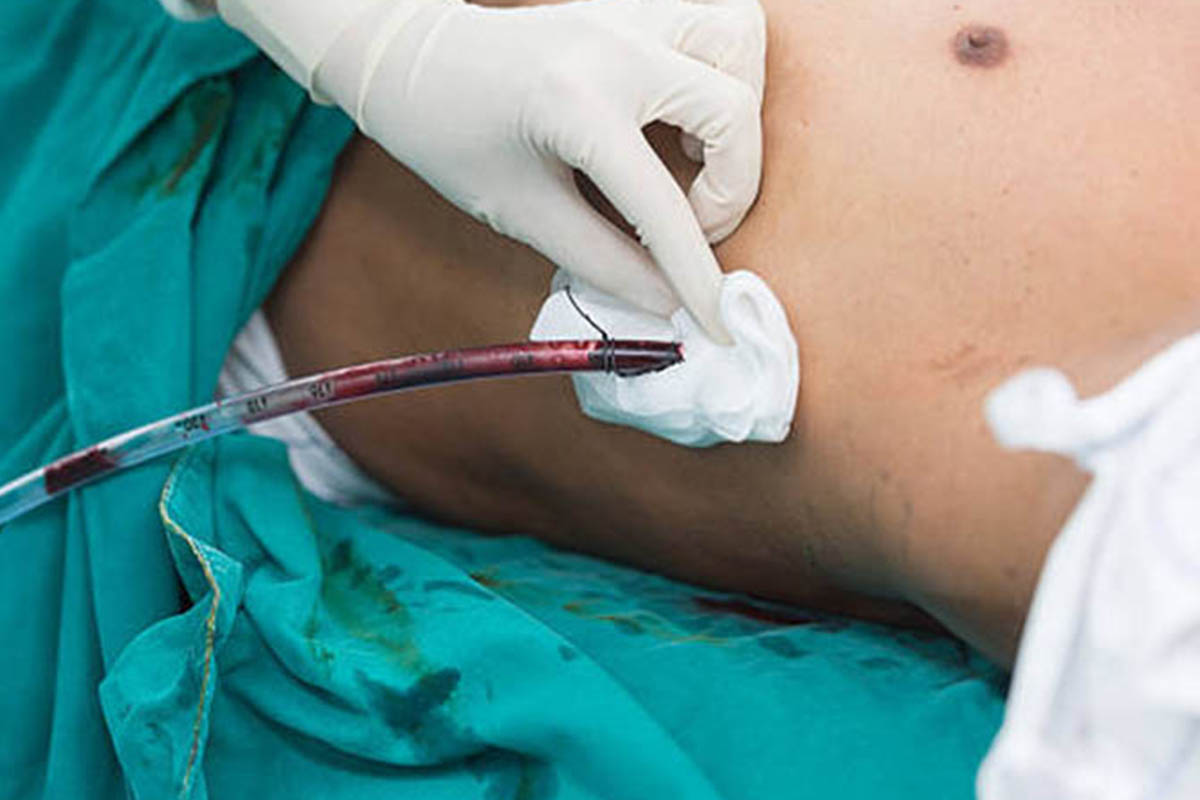
An intercostal drain (also known as a chest drain or pleural drain) is a flexible plastic tube that is inserted through the chest wall into the pleural space. It is used to drain pneumothoraces or effusions from the intrathoracic space. All intercostal drains inserted for pleural effusions should be real time ultrasound guided
Chest drains, also referred to as chest tubes, under water sealed drainage (UWSD), thoracic catheter, tube thoracostomy, or intercostal drain. Chest drains provide a method of removing air & fluid substances from the pleural space. The idea is to create a one-way mechanism that will let air/fluid out of the pleural space and prevent outside air/fluid from entering into the pleural space. This is accomplished by the use of an underwater seal. The distal end of the drainage tube is submerged in 2cm of H2O. They use flexible plastic tubes which are inserted through the chest wall and into the pleural space between the 5th and 6th intercostal space in the mid-axillary line, venting the space which allows air back out.
Breathing is stimulated by the build up of CO2 levels in the bloodstream. When the diaphragm descends there is an increase in interthoracic space and a decrease in interthoracic pressure. Intrapulmonary pressure also decreases which draws air into the lungs as the pressure outside of the lungs is greater than the pressure inside. Weak diaphragm decreases the available volume making it harder to draw air in and also increases the risk of developing pneumonia. Lungs are surrounded by pleura which have a layer of fluid between them.
When your chest tube is inserted, you will lie on your side or sit partly upright, with one arm over your head.

Copyright © 2022 Dr. Sandhya Bade | All Rights Reserved | Created & Crafted By Itorix Infotech
WhatsApp us